Hemorrhoid-Friendly Recipe Planner
| Ingredient | Fiber (g/100g) | Water (g/100g) | Anti-Inflammatory Score |
|---|
No ingredients added yet. Add ingredients to see your meal plan.
Meal Summary
Total Fiber: 0g | Water Intake: 0L | Anti-Inflammatory Score: 0
When it comes to soothing hemorrhoids, the food on your plate can be a game‑changer. Hemorrhoid‑Friendly Recipes are nutritious meals rich in soluble fiber, hydration, and anti‑inflammatory ingredients that support a healthy colon and reduce straining. By focusing on hemorrhoid-friendly recipes, you give your gut the boost it needs while keeping discomfort at bay.
Quick Takeaways
- Prioritize soluble fiber (10‑15g per meal) from oats, beans, and fruits.
- Stay hydrated - aim for 2‑2.5L of water daily.
- Include anti‑inflammatory spices like turmeric and ginger.
- Choose low‑FODMAP options if you have a sensitive gut.
- Plan meals ahead to avoid rushed, low‑fiber choices.
Why Diet Matters for Hemorrhoids
Hemorrhoids develop when veins in the rectal area are strained. The main dietary culprits are constipation and hard stools, both of which increase pressure during bowel movements. By feeding the colon with ample fiber, you soften stool, speed transit, and lessen the need to push hard. Hydration is the partner‑in‑crime - fiber works best when it absorbs water, forming a gel that eases passage.
Beyond fiber, chronic inflammation can aggravate vascular tissue. Certain foods-red meat, fried snacks, and excessive dairy-trigger systemic inflammation, which may worsen hemorrhoidal swelling. Swapping these for anti‑inflammatory ingredients creates a calming environment for the delicate blood vessels.
Core Nutrition Principles
The recipe framework rests on three pillars:
- Fiber (soluble and insoluble plant carbohydrate that adds bulk and moisture to stool) - target 25‑30g daily.
- Water (essential fluid that softens fiber and aids colonic motility) - at least 8 cups per day.
- Anti‑inflammatory foods - turmeric, ginger, omega‑3 rich seeds, and leafy greens.
When these three line up, you get a “gut‑friendly” platform that not only reduces hemorrhoid flare‑ups but also supports overall digestive health.
Pantry Staples for a Hemorrhoid‑Friendly Kitchen
Stock these items, and you’ll never scramble for a suitable ingredient again:
- Rolled oats (high in beta‑glucan soluble fiber, great for breakfast or baking)
- Whole‑grain quinoa (complete protein and fiber, gentle on the gut)
- Chia seeds (10g fiber per ounce, forms a gel that promotes stool softness)
- Flaxseed meal (omega‑3 fatty acids and lignans that reduce inflammation)
- Probiotic yogurt (supports gut microbiome balance, aiding regularity)
- Turmeric powder (curcumin’s anti‑inflammatory power helps soothe vascular irritation)
- Fresh berries, apples, and pears - natural sources of pectin, a gentle soluble fiber.
- Leafy greens (spinach, kale) - low‑calorie, high‑magnesium, aid muscle relaxation in the colon.
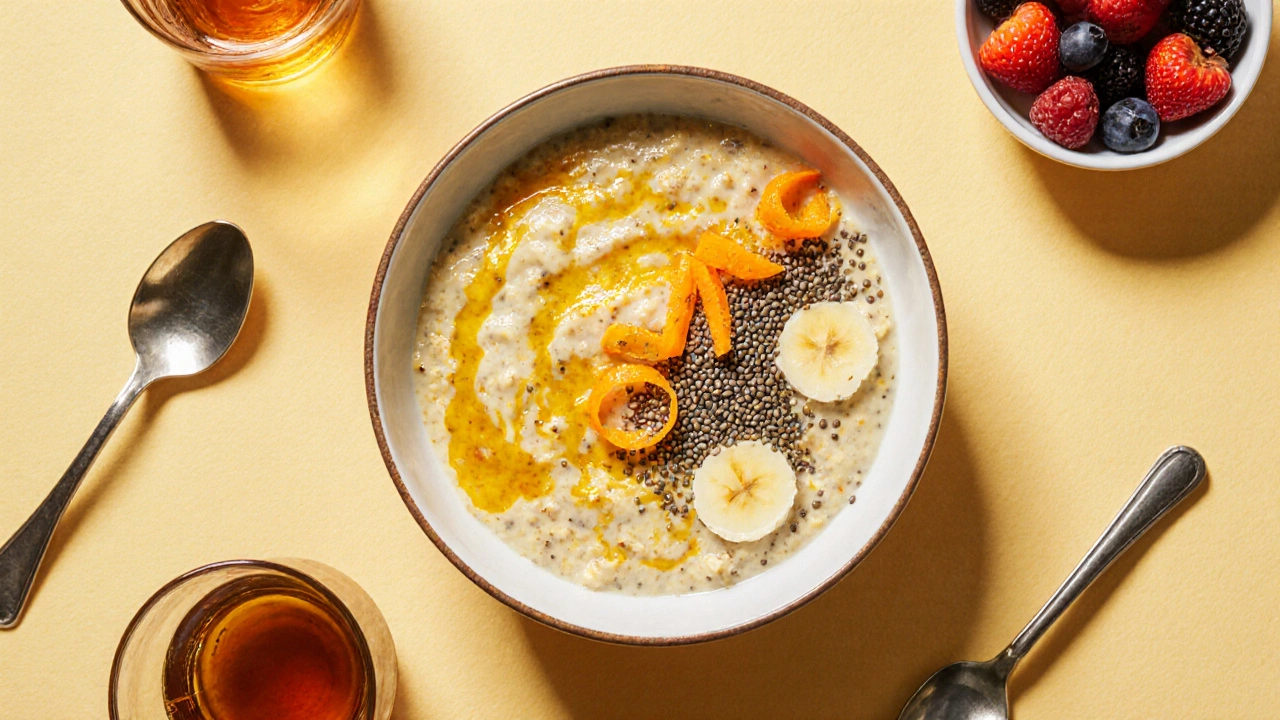
High‑Fiber vs Low‑Fiber Meal Components
| Ingredient | Fiber (g per 100g) | Water (g per 100g) | Anti‑Inflammatory Score* |
|---|---|---|---|
| Rolled oats | 8.0 | 12 | 2 |
| White rice (refined) | 0.4 | 68 | 1 |
| Chia seeds | 34.4 | 5 | 3 |
| Potato (skin‑on) | 2.2 | 79 | 1 |
| Broccoli | 2.6 | 89 | 3 |
*Score 1‑3, higher means stronger anti‑inflammatory compounds.
7‑Day Sample Meal Plan
Each day hits roughly 30g of fiber, includes a probiotic source, and features at least one anti‑inflammatory spice.
- Day 1
- Breakfast: Overnight oats with chia seeds, sliced apple, and a dollop of probiotic yogurt.
- Lunch: Quinoa salad with spinach, roasted carrots, and a turmeric‑lemon dressing.
- Dinner: Baked salmon (rich in omega‑3) with steamed broccoli and sweet‑potato mash.
- Day 2
- Breakfast: Smoothie bowl - blended frozen berries, flaxseed meal, oat milk, and a sprinkle of ginger powder.
- Lunch: Lentil soup (high soluble fiber) with a side of whole‑grain toast.
- Dinner: Stir‑fried tofu, bok choy, and brown rice seasoned with turmeric.
- Day 3
- Breakfast: Warm millet porridge topped with sliced pear and a drizzle of honey.
- Lunch: Chickpea and cucumber salad with probiotic kefir dressing.
- Dinner: Grilled chicken breast, quinoa pilaf, and roasted cauliflower.
- Day 4
- Breakfast: Greek yogurt parfait layered with berries, oats, and a spoon of chia.
- Lunch: Whole‑grain wrap filled with hummus, spinach, and shredded carrots.
- Dinner: Poached cod with a ginger‑lime sauce, served with asparagus and brown rice.
- Day 5
- Breakfast: Scrambled eggs with sautéed kale and a side of whole‑grain toast.
- Lunch: Vegetable minestrone (beans, carrots, tomatoes) with a sprinkle of turmeric.
- Dinner: Turkey meatballs in a tomato‑basil broth, paired with spaghetti squash.
- Day 6
- Breakfast: Buckwheat pancakes topped with fresh strawberries and a light yogurt drizzle.
- Lunch: Brown‑rice sushi rolls with avocado, cucumber, and a side of miso soup.
- Dinner: Lentil‑stuffed bell peppers, seasoned with cumin and a pinch of ginger.
- Day 7
- Breakfast: Apple‑cinnamon oatmeal with a spoonful of flaxseed.
- Lunch: Quinoa‑black bean bowl, kale, corn, and lime‑turmeric vinaigrette.
- Dinner: Baked trout with lemon, served alongside roasted Brussels sprouts and sweet‑potato wedges.
Feel free to swap any protein source for a vegetarian alternative; the fiber count stays steady as long as you keep the whole grains and legumes.
Three Quick Recipes to Add to Your Rotation
1. Turmeric‑Ginger Oatmeal
- Combine ½cup rolled oats and 1cup water in a pot.
- Bring to a simmer, then stir in ½tsp turmeric powder and ¼tsp freshly grated ginger.
- Cook 5‑7minutes, add a sliced banana and a drizzle of maple syrup.
- Top with 1tbsp chia seeds for extra fiber.
2. Probiotic Berry Smoothie
- Blend 1 cup mixed berries (fresh or frozen) with ¾ cup probiotic yogurt.
- Add 1tbsp flaxseed meal, ½ cup oat milk, and a pinch of cinnamon.
- Blend until smooth; pour into a glass and enjoy immediately.
3. Fiber‑Rich Veggie Stir‑Fry
- Heat 1tbsp olive oil in a wok; add 1cup sliced bell peppers, ½ cup broccoli florets, and ½ cup snap peas.
- Stir‑fry for 4‑5minutes; toss in 2tbsp low‑sodium soy sauce and ¼tsp turmeric.
- Serve over ¾ cup cooked quinoa; garnish with toasted sesame seeds.
Cooking Tips That Keep It Gentle
- Low‑heat methods: Steaming, poaching, and slow‑cooking preserve fiber integrity better than deep‑frying.
- Batch prep: Cook a big pot of quinoa or brown rice on Sunday; store in portioned containers for quick meals.
- Soak beans: Overnight soaking reduces gas‑producing compounds while keeping the fiber intact.
- Mind the spice level: While turmeric and ginger are beneficial, extremely hot chilies can irritate a sensitive gut for some people.
- Hydration timing: Sip water throughout the day; a glass right after a high‑fiber meal helps the fiber swell correctly.
Common Pitfalls & How to Fix Them
Not enough water - Even a fiber‑rich diet won’t work if you’re dehydrated. Set reminders on your phone or keep a water bottle visible.
Relying on processed “high‑fiber” bars - Many contain added sugars and artificial sweeteners that can cause bloating. Stick to whole‑food sources.
Skipping probiotic foods - A healthy microbiome eases stool transit. If you can’t tolerate dairy, try fermented veggies like kimchi or a non‑dairy kefir.
Over‑cooking vegetables - Excess heat can break down fiber’s gel‑forming ability. Aim for just‑tender‑crisp to retain texture and nutrients.
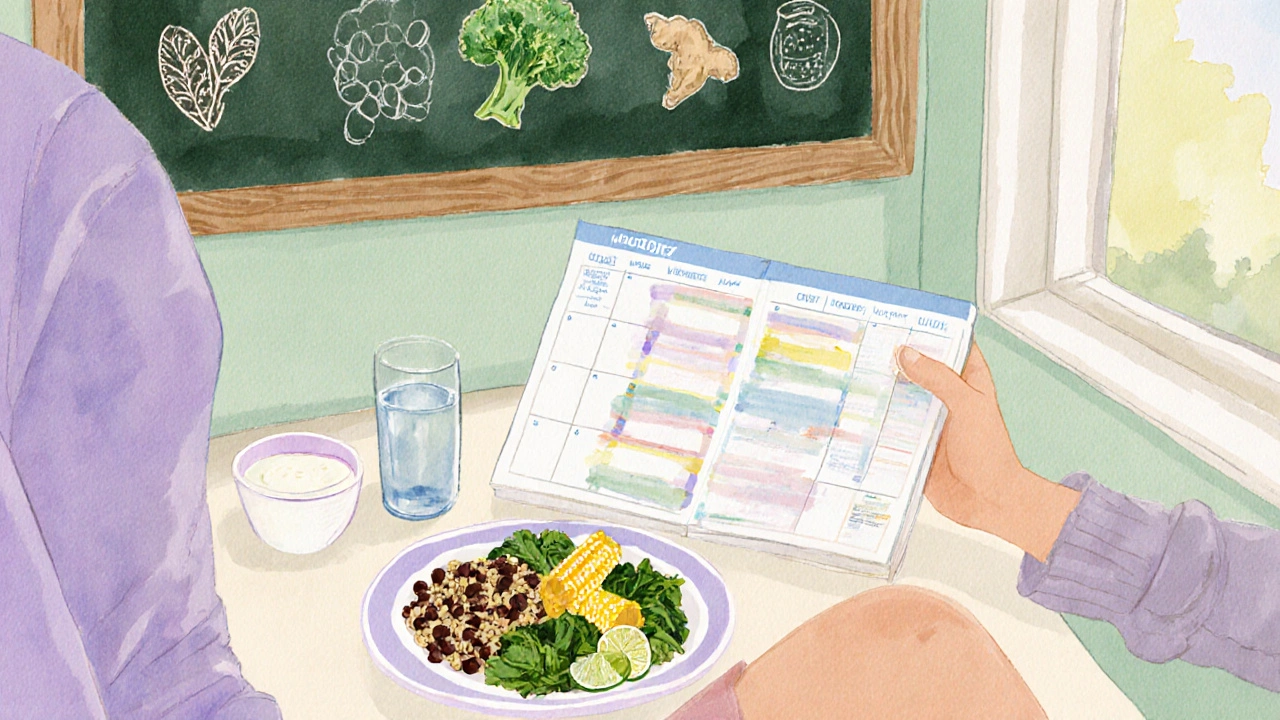
Frequently Asked Questions
Can I eat fruit if I have hemorrhoids?
Yes. Fresh fruit provides soluble fiber (especially apples, pears, berries) and plenty of water. Watch out for dried fruits with added sugar - they can be constipating.
Is a low‑FODMAP diet compatible with hemorrhoid‑friendly eating?
It can be. Choose low‑FODMAP, high‑fiber foods like oats, quinoa, carrots, and firm bananas. Pair them with a probiotic yogurt to keep gut flora balanced.
How much fiber should I aim for each day?
Around 25g for women and 30g for men, split across meals. The sample plan above hits roughly 30g daily, which is ideal for soft stools.
Do spicy foods worsen hemorrhoids?
Very hot chilies can irritate the lining of the gut in sensitive individuals, potentially increasing discomfort. Use milder heat or opt for anti‑inflammatory spices instead.
Should I take fiber supplements?
Supplements can help short‑term, but whole foods deliver additional nutrients like antioxidants and probiotics. If you choose a supplement, pick a psyllium husk product and increase water intake.
By weaving these principles into everyday cooking, you’ll notice fewer trips to the bathroom, less straining, and a calmer down‑there. Remember, the goal isn’t a restrictive diet-it’s a sustainable, tasty way of feeding your gut so hemorrhoids stay in the background.

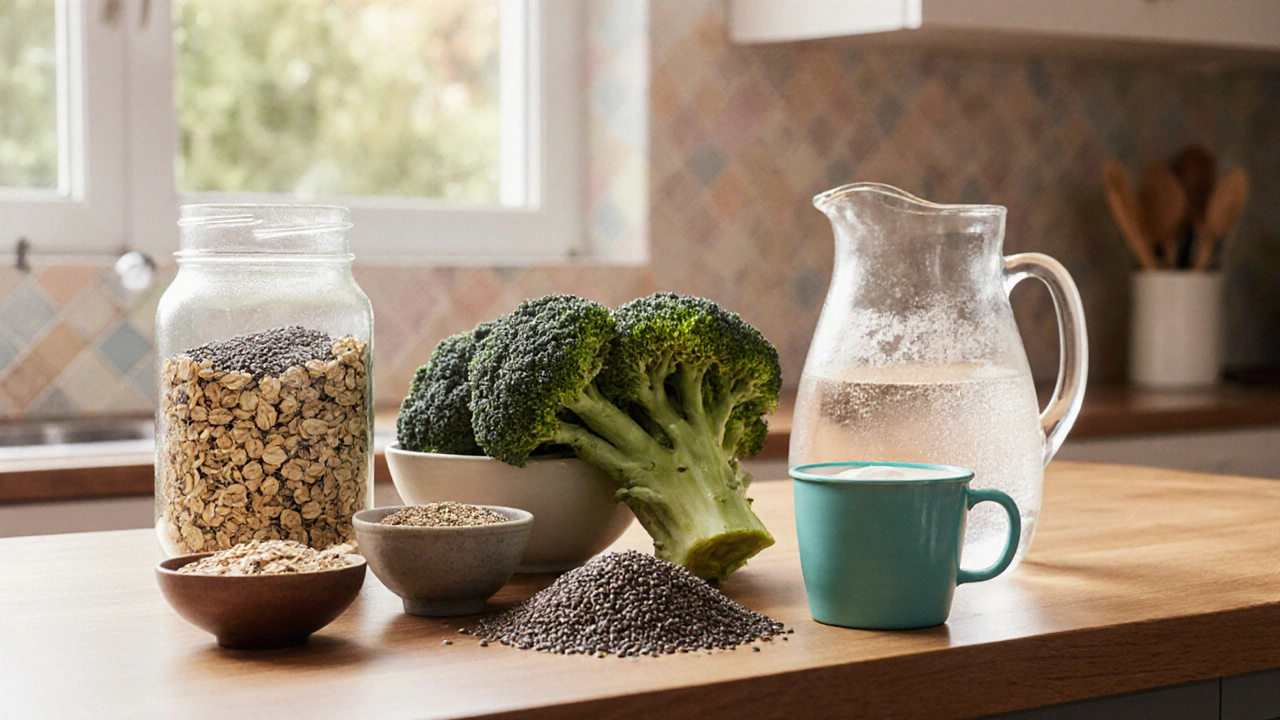
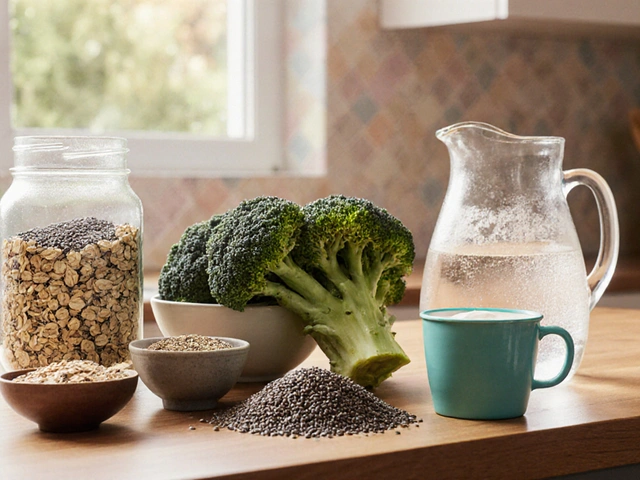
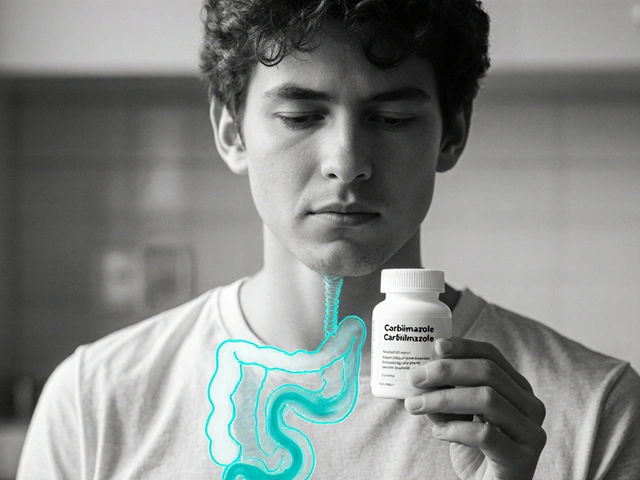

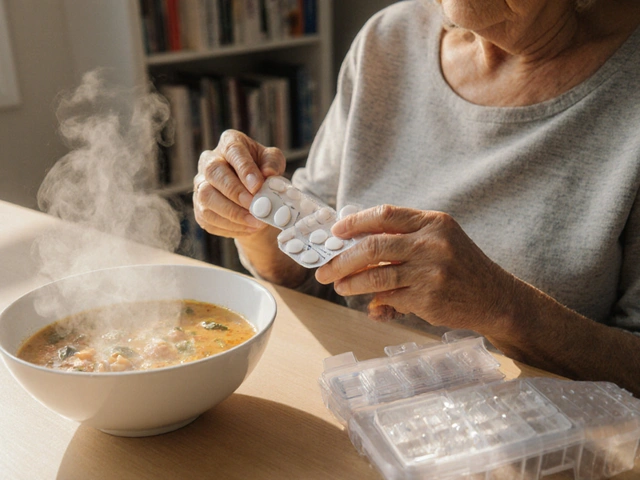

Post A Comment